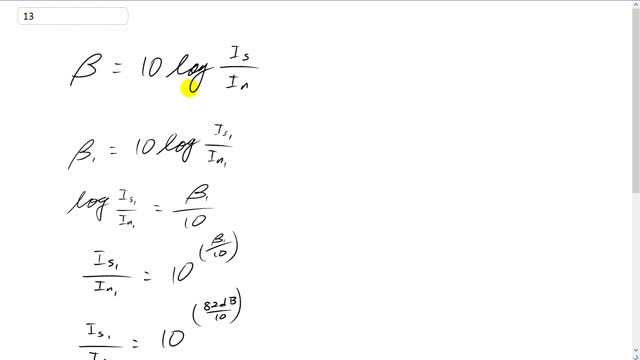
One CD player is said to have a signal-to-noise ratio of 82 dB, whereas for a second CD player it is 98 dB. What is the ratio of intensities of the signal and the background noise for each device?

In order to watch this solution you need to have a subscription.
This is Giancoli Answers with Mr. Dychko. This decibel formula can be used for other things than just sound. It can be used for, you know, signal to noise ratio for example, anything that has large ratios. OK. So, we'll say that for CD player 1 the signal to noise ratio, ratio in decibels equals 10 times logarithm of the intensity of the signal divided by the intensity of the noise. And then divide both sides by 10. And you get log of this ratio is β1 over 10. And make both sides powers of 10. And on the left side 10 to the power of a logarithm is just the argument of the logarithm. So, that's I signal 1 over intensity of the noise 1. And on the right hand side we have 10 to the power of β1 over 10. So, the signal to noise ratio in the first CD player is 10 to the power of 82 decibels over 10 which is 1.6 times 10 to the 8. So, the signal is this many times greater than the noise. And in the second CD player the signal to noise ratio is 10 to the power of 98 decibels over 10 which is 6.3 times 10 to the 9.